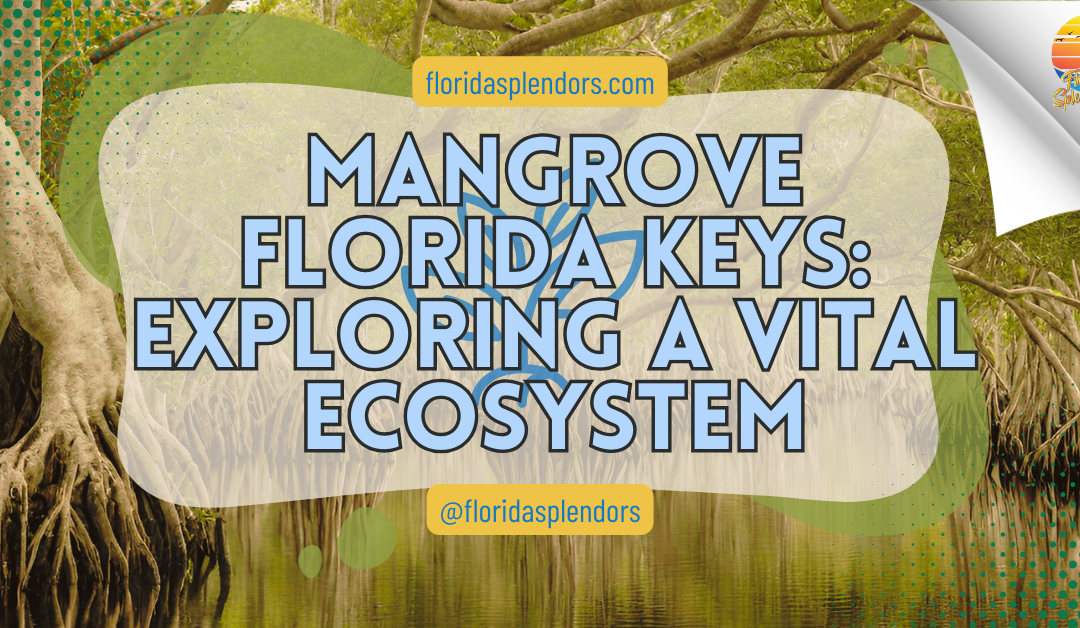==================
Florida Splendors is supported by our audience. When you purchase through one of our links, we may earn a small affiliate commission. As an Amazon Associate I earn from qualifying purchases. Your cost is not affected.
Mangrove Florida Keys offer an opportunity to discover a diverse ecosystem. One of my cherished activities in Florida is kayaking amidst the mangrove forests of the Keys. These vibrant ecosystems harbor endangered species and serve as crucial habitat for marine life. While exploring, I advocate for minimal human disturbance, opting to capture the splendor with a camera instead.
As I navigate the tranquil waterways, the intricate roots of the mangroves reveal a world of hidden wonders. Each paddle stroke brings me closer to the heart of this natural sanctuary, where the delicate balance of life unfolds in every ripple and shadow.
Mangrove Florida Keys: Essential Coastal Guardians
The mangrove Florida Keys serve as vital ecosystems supporting an array of marine life and providing essential protection against coastal erosion and storm damage. This irreplaceable network of red, black, and white mangroves is a cornerstone of the local economy and environmental health. Here, we’ll explore how these unique habitats function and why their preservation matters more than ever.
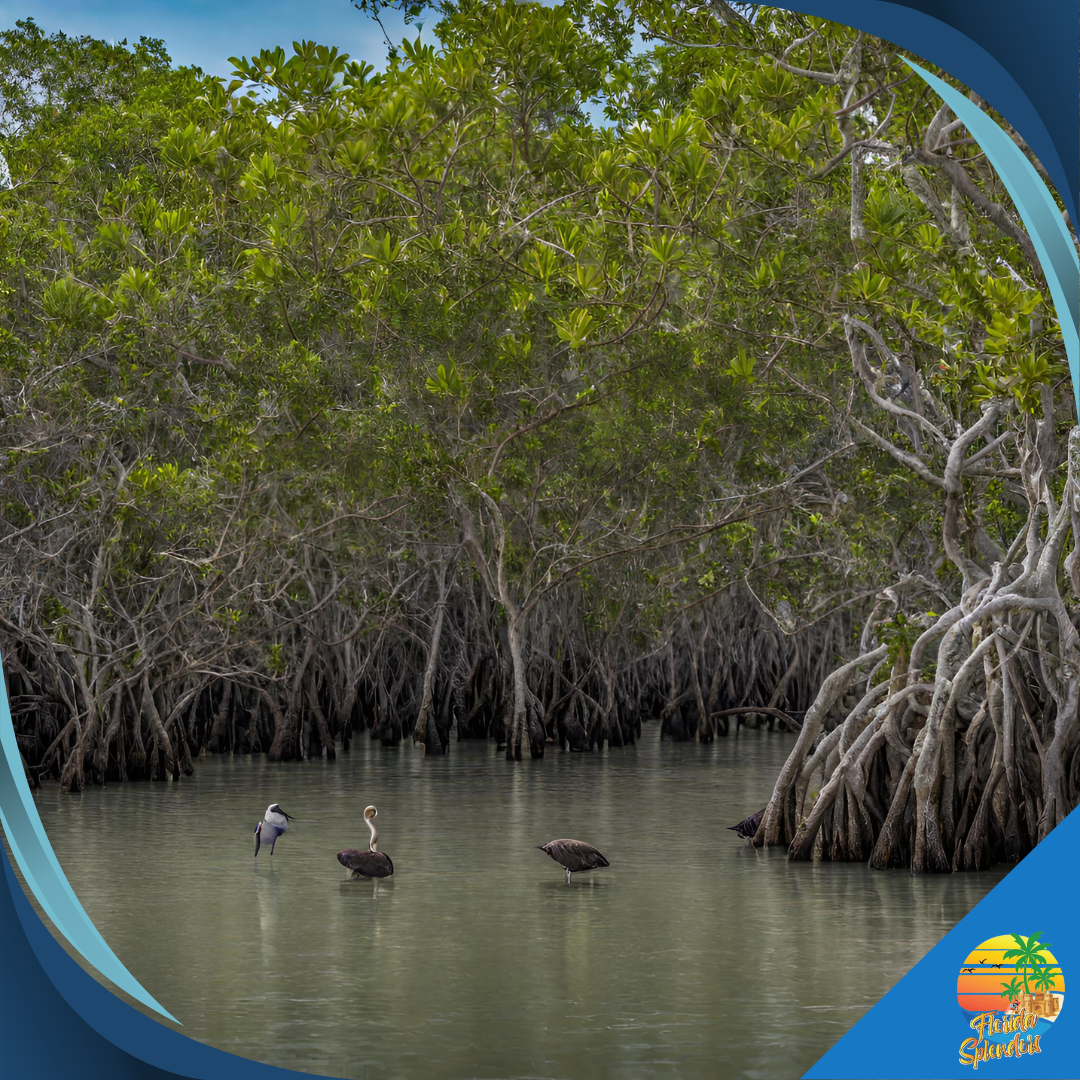
Key Takeaways
- The Florida Keys mangroves are critical ecosystems providing essential services like marine life nursery habitats, storm surge protection, and biodiversity hotspots.
- Mangrove forests in the Florida Keys play a significant role in climate regulation by storing large amounts of carbon dioxide and acting as a natural defense against coastline erosion and water pollution.
- Human activities threaten mangroves, but conservation initiatives and responsible tourism practices are crucial to safeguarding and restoring these fragile ecosystems in the face of ongoing climate change.
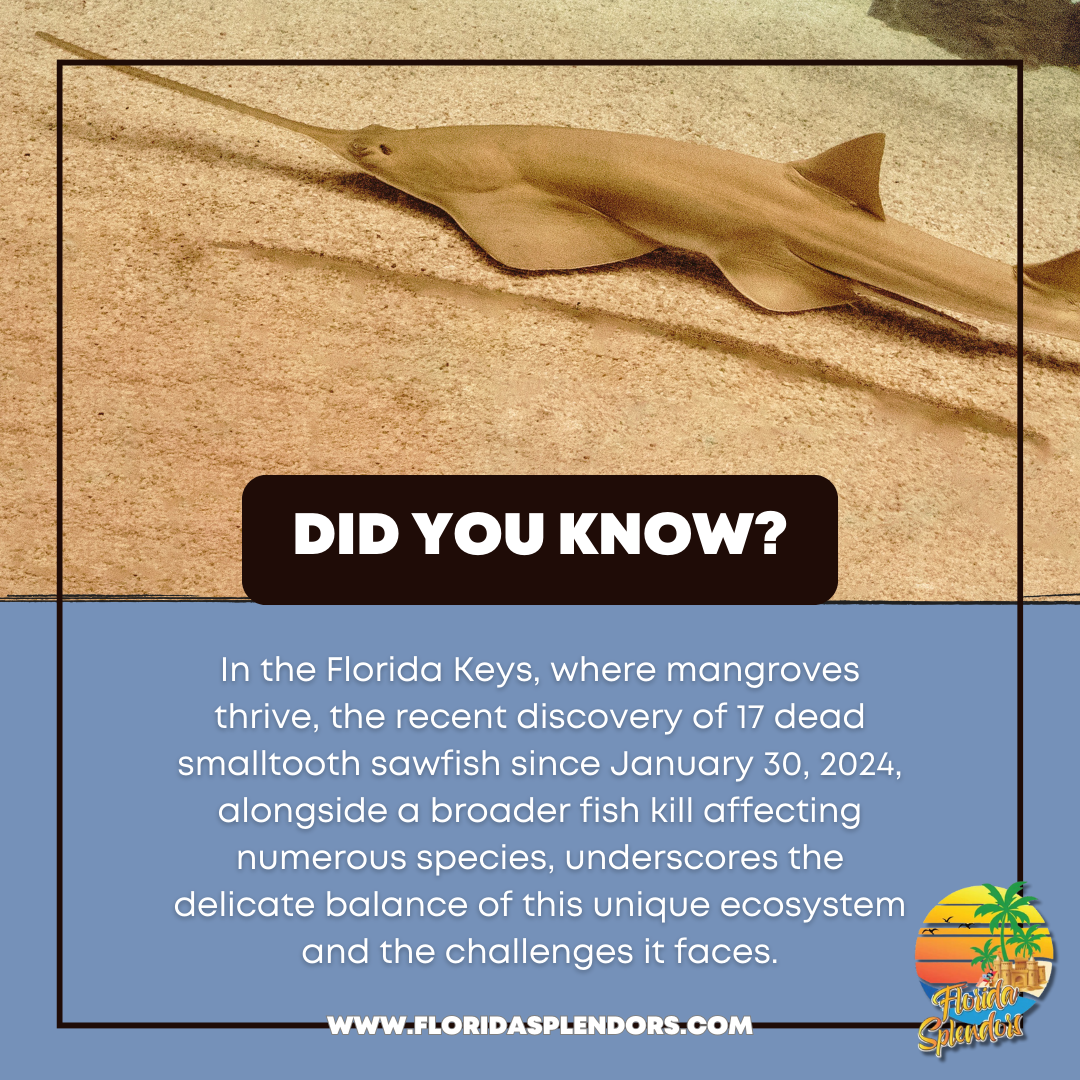
The Mangrove Habitats of the Florida Keys
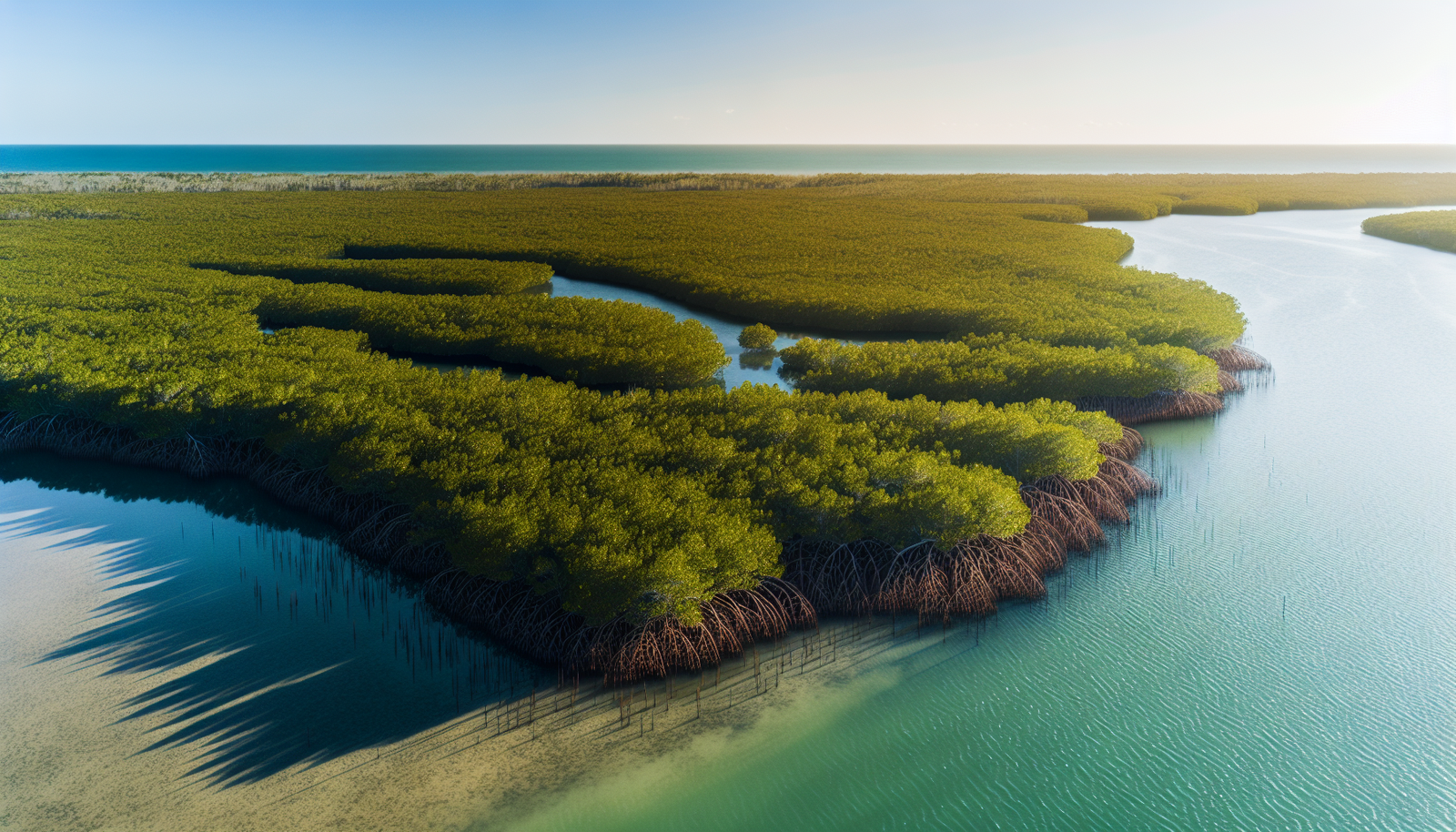
Nestled between land and sea, the Florida Keys’ mangrove habitats offer a rich life tapestry, providing vital ecosystem services. They are home to three distinct species – red mangroves, black mangroves, and white mangroves – each boasting unique characteristics that contribute to the health of this coastal ecosystem.
The Three Species of the Florida Keys
Thriving in the saturated environment of the Florida Keys, the red mangrove is easily identifiable by its finger-like roots. These roots, known as prop roots, offer a stable support system for mangrove trees and facilitate air transportation to the roots submerged in water, a crucial adaptation for survival in this unique habitat.
Equipped with long horizontal roots and pneumatophores, the black mangrove showcases its remarkable resilience in the salty environments of the Florida Keys. It has the unique ability to:
- Extract freshwater from saltwater
- withstand high levels of salinity
- Thrive in flooded conditions
- Provide habitat and protection for various species
These adaptations are crucial for the black mangrove’s survival in this unique habitat.
Typically, the white mangrove inhabits higher elevations than red and black mangroves, showcasing how ecological differentiation and resource partitioning enable these three species to share the same habitat.
Nursery Habitat for Marine Life
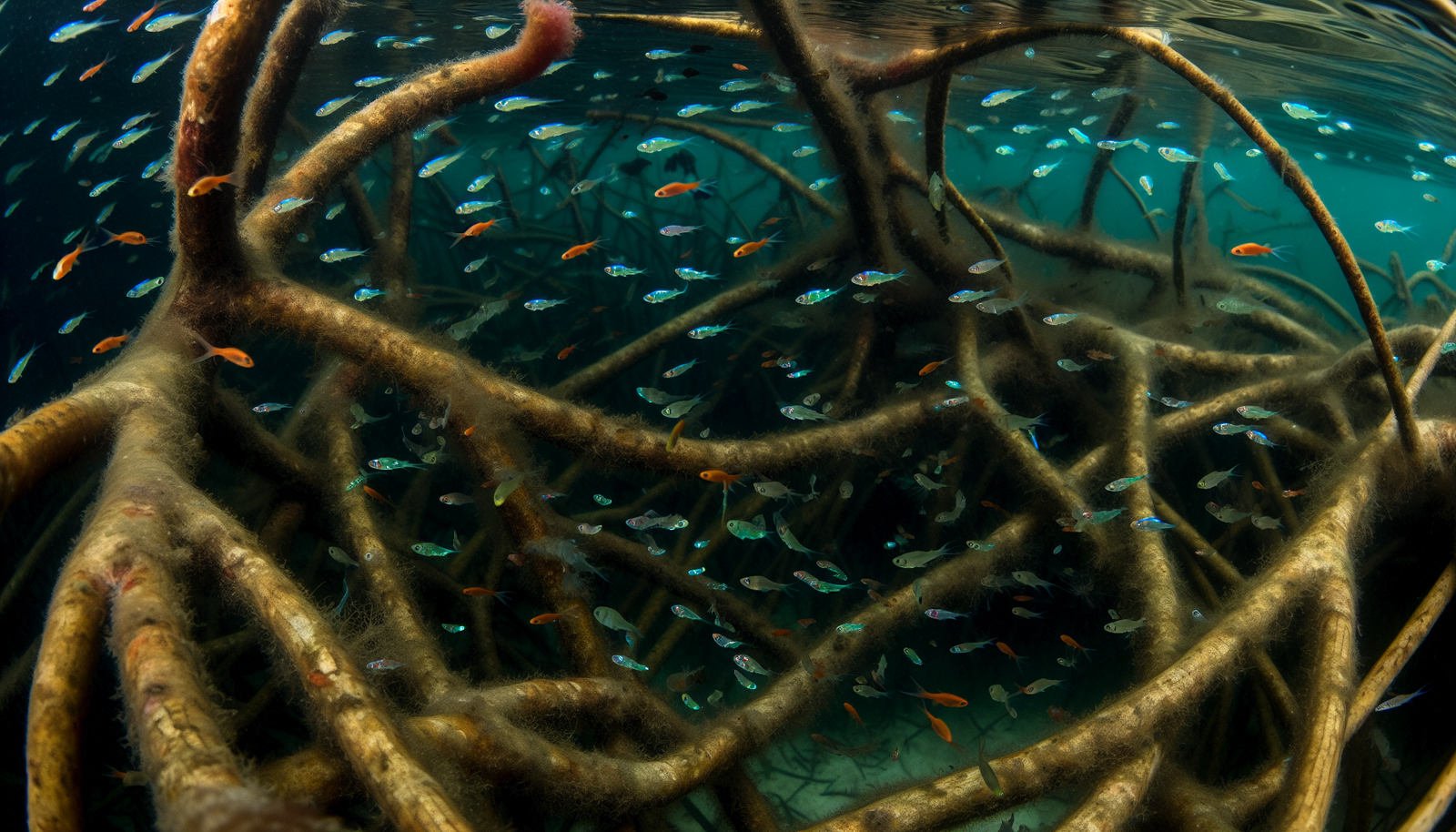
Beneath the tangle of mangrove roots, a vibrant world teems with life in salt marshes. These submerged root systems serve as a haven for marine organisms, functioning as protected nursery areas for fish, crustaceans, and shellfish. Here, amidst the safety of the roots, juvenile marine species find shelter and sustenance, contributing to the stability and well-being of marine populations.
The mangroves’ nursery function benefits the ecosystem and significantly supports the region’s economy. By providing shelter and food for juvenile fish, the mangroves ensure a steady supply of fish, making the Florida Keys an ideal location for commercial and recreational fishing.
Storm Surge Protection
However, mangroves play a role that extends beyond simply supporting marine life. They also play a crucial role in safeguarding the coastline from storm surges. Like living seawalls, mangroves buffer inland ecosystems from hurricane winds and waves, absorbing some of the energy of storm surges and reducing potential damage.
Indeed, without mangrove protection, regions may experience substantial increases in storm surge damage. The absence of this natural barrier means the force of the water is not mitigated, resulting in heightened force of the surge and more significant property damage. This highlights the crucial role mangroves play in coastal resilience.
The Ecological Significance of Mangroves in the Florida Keys

The ecological significance of mangroves in the Florida Keys extends beyond their role as a nursery habitat. These unique ecosystems also serve as vital carbon sinks, helping to regulate climate by storing large amounts of carbon dioxide.
Moreover, they are biodiversity hotspots, home to a diverse array of tropical species, flora, and fauna, underscoring the importance of their conservation.
Carbon Storage and Climate Regulation
While necessary for local ecosystems, Mangrove forests also play a significant role globally as carbon sinks. These forests can absorb carbon dioxide and store substantial amounts of ‘blue carbon’ in their biomass and sediment. Mangroves in the Florida Keys are known to store 3-4 times more carbon than terrestrial tropical forests, making them one of the most carbon-dense ecosystems globally.
The ecological significance of mangroves extends beyond just carbon storage. These versatile ecosystems also play a crucial role in:
- Climate regulation
- Stabilizing the coastline
- Mitigating erosion caused by storm surges, currents, waves, and tides
- Filtering water, maintaining water quality and clarity
These functions protect the ecosystem and offer protection for numerous fish species.
Biodiversity Hotspots
The Florida Keys mangroves are considered biodiversity hotspots due to their status as one of the world’s most crucial ecosystems and their significant biodiversity. These ecosystems sustain a wide array of organisms, including large predators like birds of prey and crocodiles, as well as numerous fish species that are vital to the ecology and economy of the region.
Regrettably, this rich biodiversity faces threats from various factors, including:
- Water pollution
- Urban development
- Invasive species
- Overfishing
- Boating activities
These threats underscore the urgent need for conservation efforts to protect these vital ecosystems and the diverse life they support.
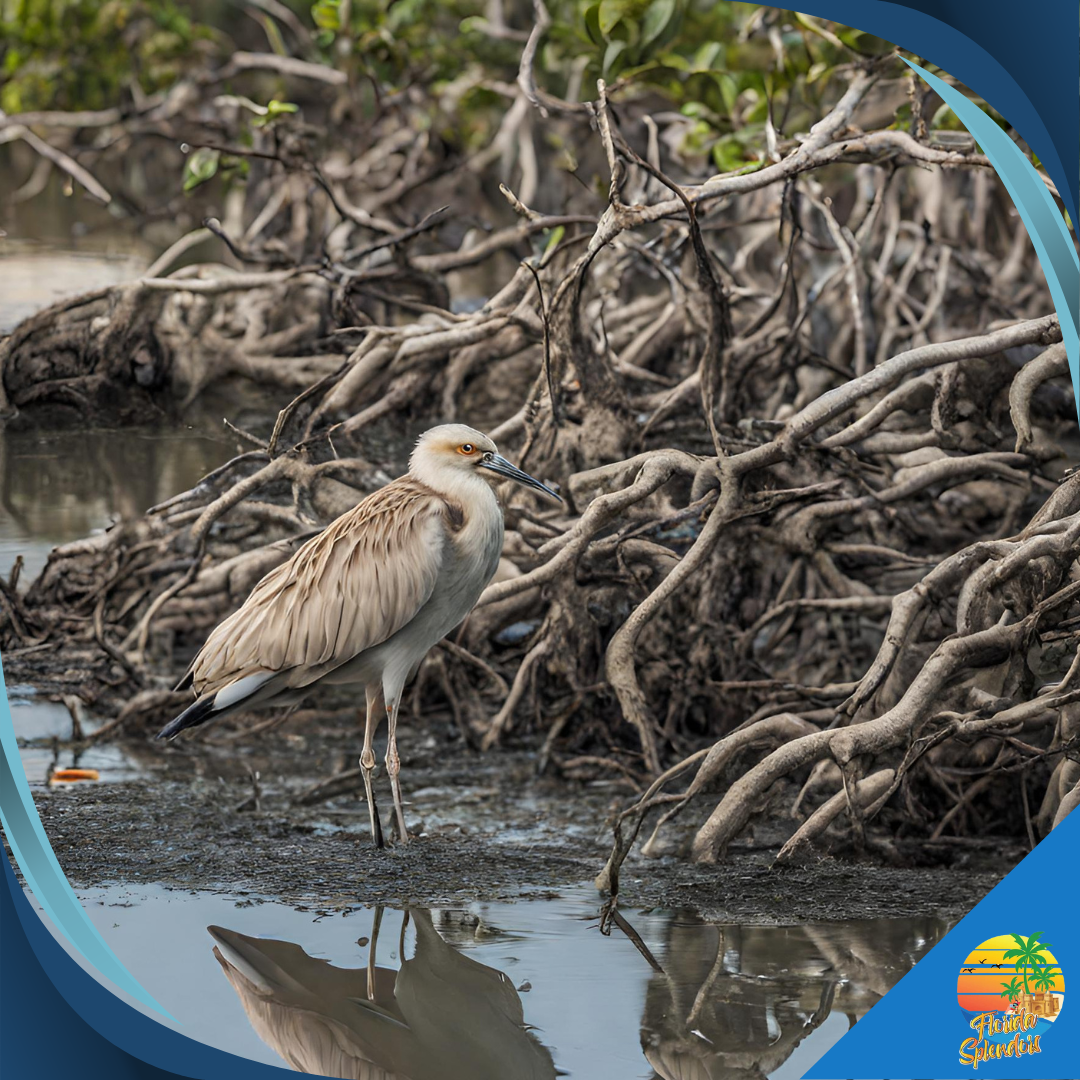
Human Impact on Mangrove Ecosystems
Despite the numerous benefits mangroves provide, it is unfortunate that they often suffer detrimental impacts from human activities. From habitat destruction due to development activities and pollution to the effects of climate change, mangroves face numerous threats.
We can help safeguard these vital ecosystems through conservation initiatives and responsible tourism.
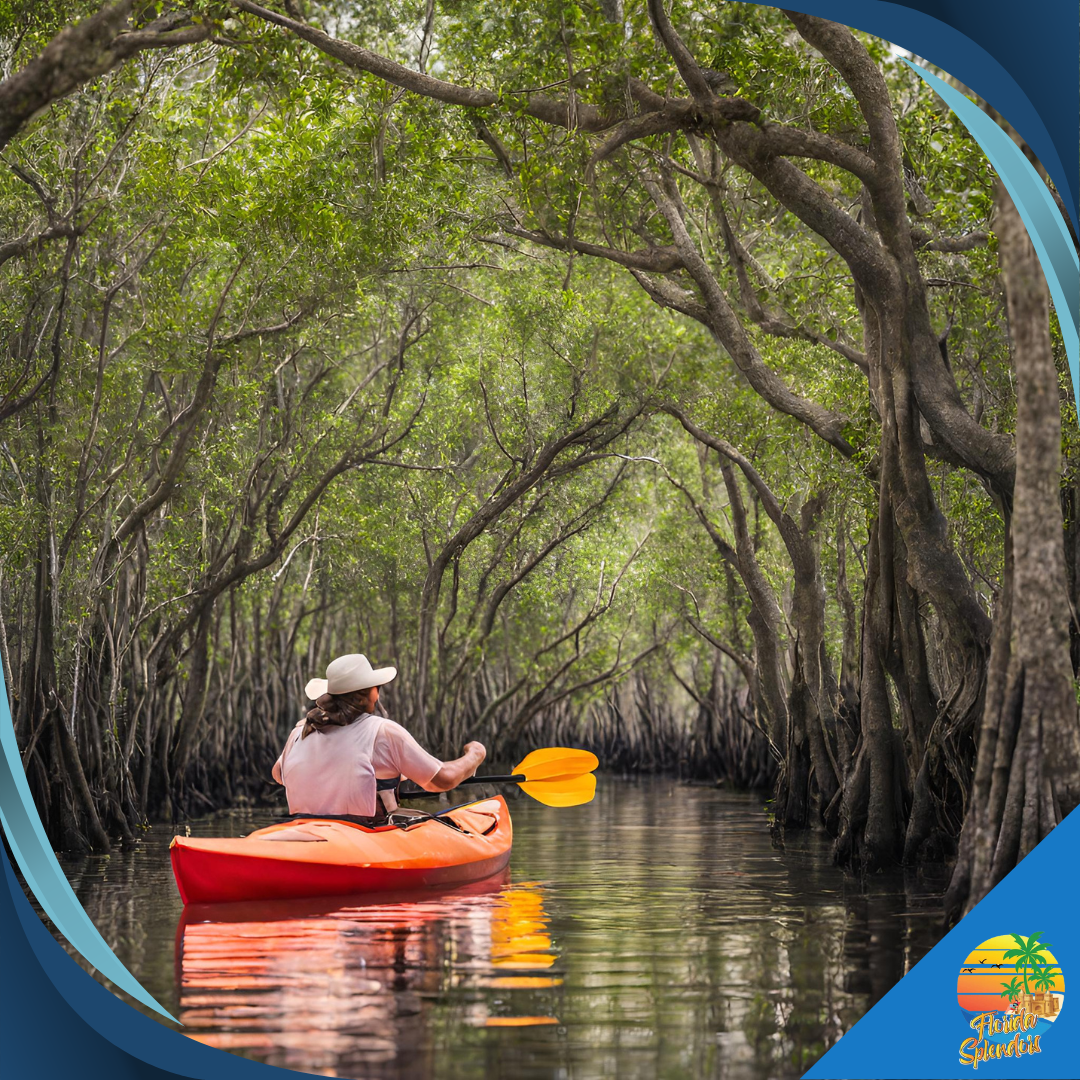
Conservation Initiatives
Recognizing the vital role of mangroves, various conservation initiatives have been implemented to protect these ecosystems. For instance, the Mangrove Trimming and Preservation Act regulates the modification of mangroves, permitting only the trimming of mangroves to a minimum height of 6 feet. Additionally, organizations such as the National Key Deer Refuge, collaborating with the Florida Department of Environmental Protection and the U.S. Fish and Wildlife Service, are engaged in mangrove conservation endeavors.
These efforts aim not only to protect mangroves but also to restore them. Restoration strategies encompass:
- the protection of diverse marine environments
- establishment of concrete conservation objectives
- utilization of adaptive management
- monitoring and evaluation of outcomes
- implementation of mangrove living shorelines to address erosion and enhance habitat
Through these efforts, we can bolster the resilience of healthy mangrove forests and ensure their survival.
Responsible Tourism
However, conservation efforts alone won’t suffice. We also need to promote responsible tourism to minimize the negative impacts of human activities on mangrove ecosystems. This involves raising awareness about the importance of mangroves, supporting conservation efforts, and providing economic incentives for their protection.
Tourists can play their part by following best practices when visiting mangrove ecosystems. This includes protecting various habitats, responsibly exploring nature trails, and supporting effective management and monitoring in marine protected areas. Through these actions, tourists can help ensure the long-term survival of these vital ecosystems.
Mangrove Adventures in the Florida Keys
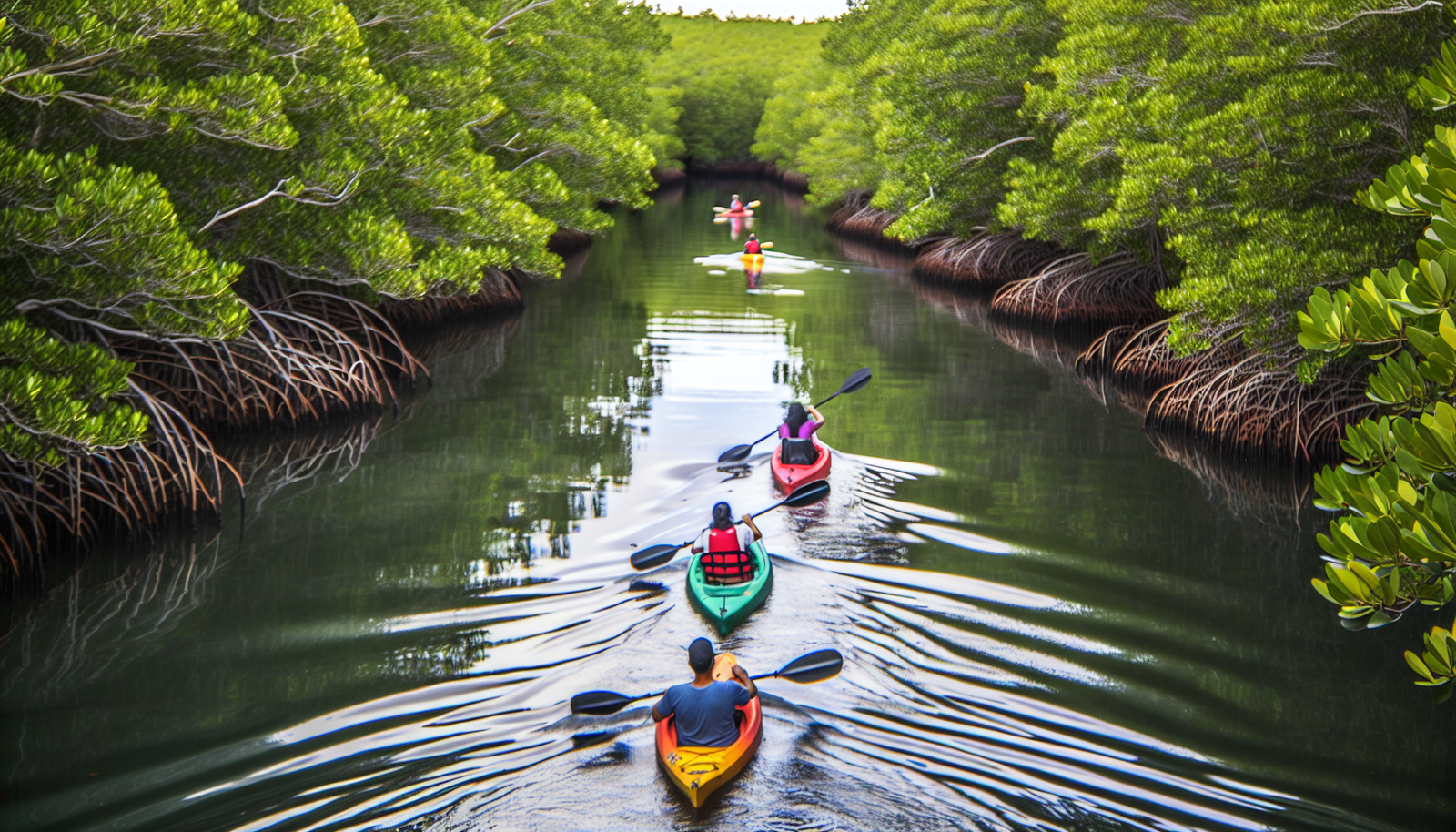
For those seeking a unique adventure, the Florida mangroves of the Gulf Coast, specifically in South Florida and the Florida Keys, offer a world of possibilities. From kayaking through the roots to birdwatching, these ecosystems provide a unique opportunity to get up close and personal with the diverse flora and fauna that call these habitats home.
Kayaking Through the Roots
One of the best ways to explore the mangroves is by kayak. This allows you to navigate through the intricate network of roots and closely examine the diverse life these ecosystems support. From the Mangroves and Manatees Eco Tour offered by Paddle the Florida Keys to the Key West Mangrove Kayak Eco Tour, numerous opportunities exist to explore these unique habitats.
Despite the unparalleled experience offered by kayaking, it is essential to remember that we must minimize our impact on these ecosystems. This includes following safety guidelines, planning the trip, and being mindful of potential dangers. By doing so, we can enjoy these unique ecosystems while ensuring their long-term survival.
Birdwatching Havens
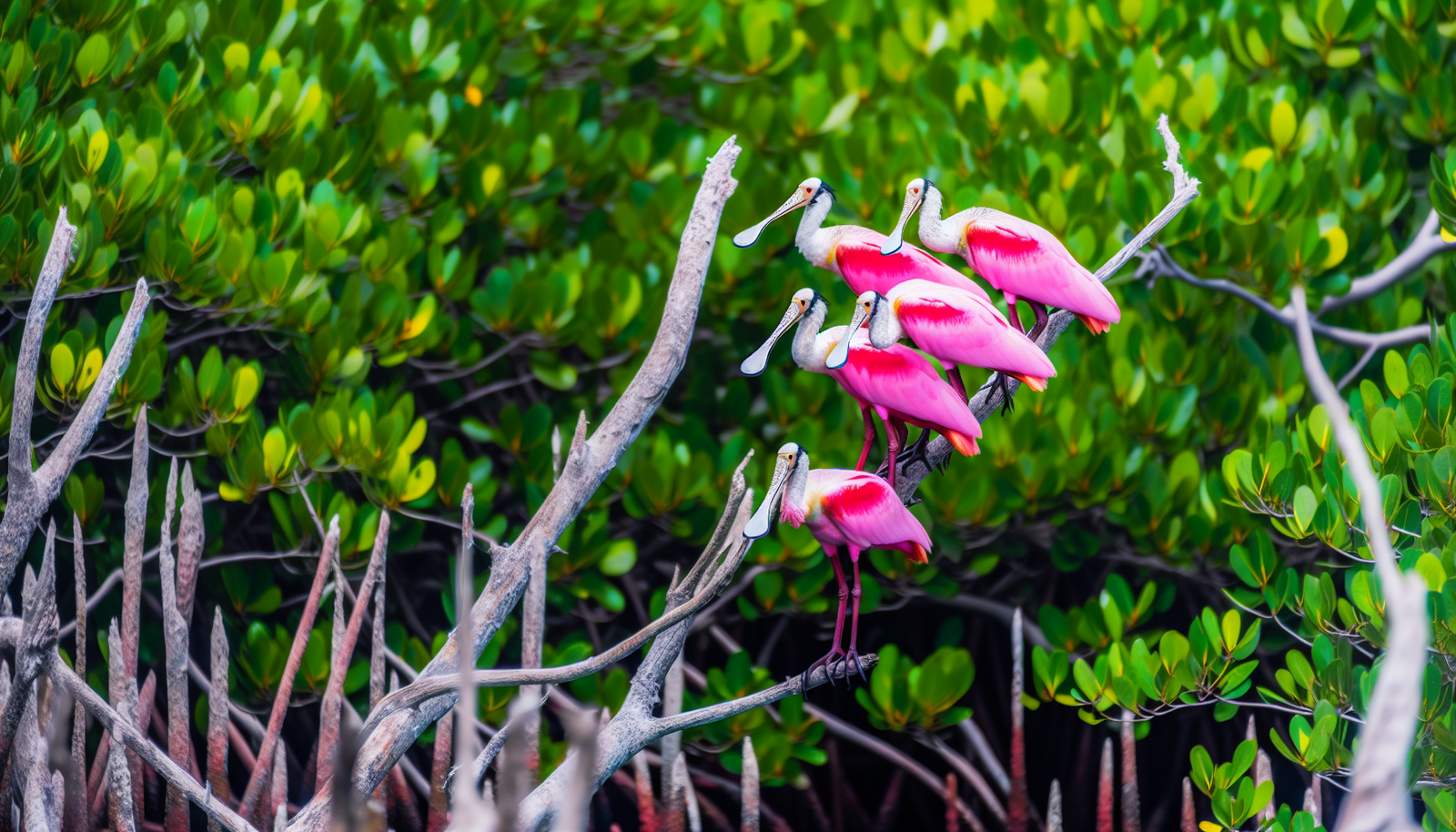
For birdwatching enthusiasts, the mangroves offer a world of opportunities. Home to numerous mangrove species and bird species, including:
- ducks
- grebes
- loons
- cormorants
- gallinules
These ecosystems are a haven for avian life. Whether you’re a seasoned birdwatcher or a casual observer, seeing these birds in their natural habitat is a sight.
The optimal time for birdwatching is during April and early May when migrating bird sightings are renowned. So, if you’re planning a trip to the Florida Keys, be sure to keep this in mind. With patience and a keen eye, you may spot some of these magnificent creatures in their natural habitat.
The Future of Mangroves in the Face of Climate Change
Despite mangroves’ numerous benefits, their future remains to be determined due to climate change. Rising sea levels pose a significant threat to these ecosystems, and we must implement strategies to help them adapt and survive.
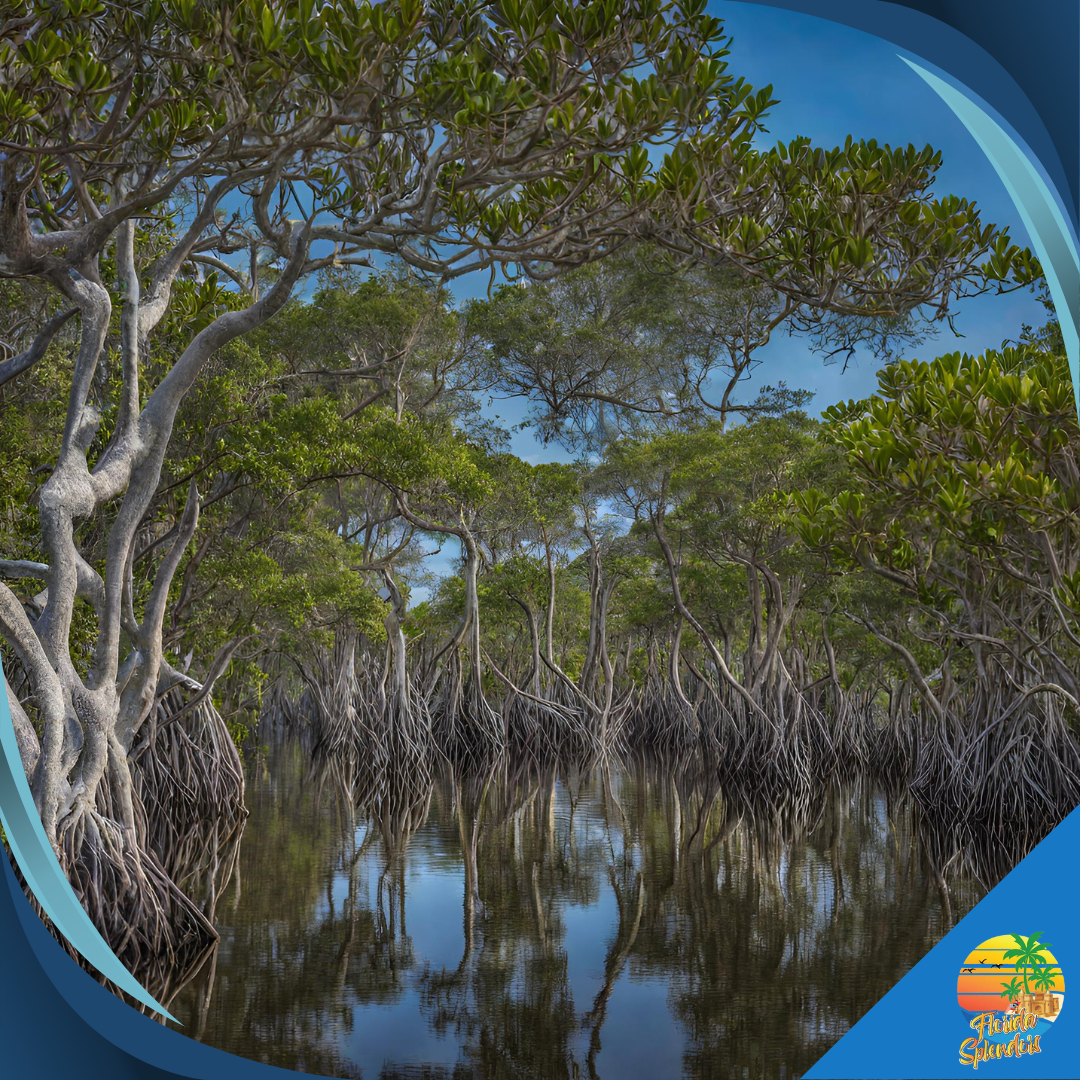
Adapting to Sea Level Rise
Mangroves face a significant threat from rising sea levels. Current projections suggest that many mangroves in the Florida Keys could vanish by 2050 if they don’t adapt. But how can mangroves adjust to rising sea levels?
Mangroves can adapt to rising sea levels by building vertically to keep their leaves and reproductive organs above water and migrating toward land to evade inundation. However, these adaptations are only sometimes sufficient, and additional measures such as habitat restoration and protection may be necessary.
Resilience Strategies
Implementing resilience strategies is critical to ensuring the long-term survival of mangroves. This includes conservation efforts, strategic actions to improve recovery capacity, and the restoration and preservation of mangrove ecosystems. By bolstering the resilience of mangroves, we can help ensure their survival in the face of climate change.
Local communities also play a vital role in these efforts. By collaborating with partners and organizations to deploy nature-based solutions, such as:
- living shorelines
- wetland restoration
- reforestation
- green infrastructure
Local communities can help protect these vital ecosystems and the diverse life they support.
Mangrove Florida Keys: Preserving Nature’s Vital Tapestry

The mangroves of the Florida Keys are a testament to the intricate and diverse world of nature. From serving as a nursery for marine life to protecting our coastlines from storm surges, these unique ecosystems play a crucial role in sustaining our planet. However, with the threats posed by climate change and human activities, it’s clear that conservation efforts and responsible tourism are more critical than ever. By understanding and appreciating these unique ecosystems, we can all play a part in ensuring their survival for generations.
Frequently Asked Questions
What's Inside
Are there mangroves in the Florida Keys?
Yes, the Florida Keys have mangroves that line over 1,800 miles of shoreline within the Florida Keys National Marine Sanctuary, including red, black, and white mangroves.
Are there alligators in Florida mangroves?
Yes, American alligators can be found in low-salinity areas of Florida mangroves, along with American crocodiles. These reptiles are residents of mangrove habitats.
Where are the Florida mangroves located?
The Florida mangroves are typically found south of Cedar Key on the Gulf Coast and south of St. Augustine on the Atlantic Coast. They thrive in tidal estuaries and low-energy coastal areas throughout the tropics and sub-tropics.
What is the most significant danger to mangroves in Florida?
Human development is the most significant danger to mangroves in Florida, which has destroyed over 60 percent of mangroves in Monroe County since the 1950s.
What are the three species of mangroves in the Florida Keys?
The three species of mangroves in the Florida Keys are the red, black, and white mangroves. Each species has unique characteristics and adaptations that allow them to thrive in this unique environment.
Embark on a Journey with Florida Splendors: Where Dreams, Sand, and Sun Collide!
Dive into the heart of Florida’s allure by connecting with us on Facebook, Instagram, Pinterest, and Twitter. Immerse yourself in a world where vibrant content, meticulously crafted product reviews, and a passionate community of travelers await to guide you through the Sunshine State’s hidden gems!
Related Reading

